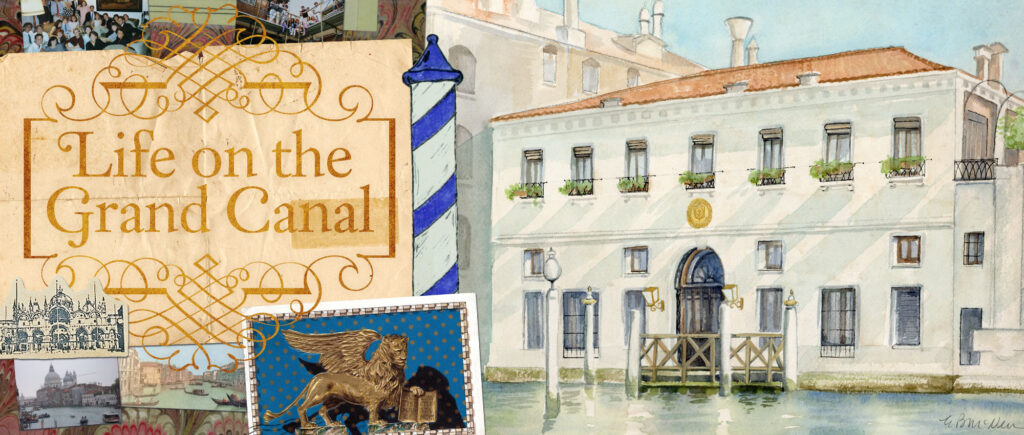
Celebrating 50 Years of Casa Artom
Venice is the city of canals, made up of piazzas, connected by bridges and bathed with vistas of red roofs. Around each corner is a feast for the eyes – Renaissance homes, Gothic palaces and Byzantine mosaics. Piazza San Marco, Palazzo Ducale and Ponte di Rialto appropriately headline any tourist must-see list, but if you wind through the narrow streets and beautifully cramped alleys to an old house along the Grand Canal, you’ll find Casa Artom, the place Wake Foresters have called home in Venice for more than five decades.
In May 2023, the Wake Forest community celebrated the 50th anniversary of Casa Artom, acquired in 1971 as the University’s first study abroad house. After having to wait through a pandemic-related postponement, about 150 alumni and friends from across generations gathered at Casa Artom. Guests enjoyed a piano concert by Peter Kairoff, professor of music and program director of Casa Artom from 1996-2021; mini classes exploring the music of Venice, the Guggenheim collection and what Shakespeare saw in Venice; and excursions that included learning about the life of gondoliers, touring the Scuola Grande di San Rocco, and understanding the cultural preservation in Venice. It was a grand gathering to toast and reminisce about the experiences that shaped their Wake Forest education.
BECOMING CASA ARTOM
The origins of Casa Artom form a delightfully “Wake Forest” story – inspired by an imaginative and entrepreneurial idea, advanced by the enthusiasm of alumni and friends, cultivated by deeply educational and personal discovery led by faculty and woven together with the familiar thread of Pro Humanitate.
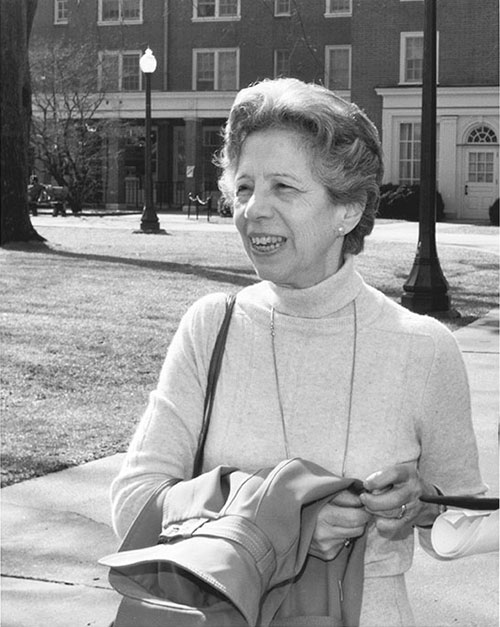
In some ways, it began on January 31, 1939, when Camillo and Bianca Artom boarded the S.S. Vulcania for America. As Italian Jews, the Artoms were fleeing their country because of the increasingly harsh, difficult and restrictive life under Mussolini’s fascist rule. Camillo, a biochemist, had taught at several universities across Italy and was well known because of his publications in medical journals – printed in French, English, Italian and German. His work centered on fats and carbohydrates, and his research contributed to the many ways to fight against the hardening of the arteries today.
Hearing of Camillo’s expertise, Dr. Coy Carpenter (1922, P ’49, P ’52, P ’55), dean of the Bowman Gray School of Medicine, offered him a teaching position at Wake Forest. Leaving the only home they had known, the Artoms crossed the Atlantic, eager for the promise of a new future.
Winston-Salem and Wake Forest quickly became home for the Artoms. Camillo served as the chair of the biochemistry department for 22 years and was honored in 1967 by his colleagues as one of a talented group of leaders who changed the course of the world in their generation. Bianca was a gifted teacher, gardener and enthusiastic patron of the arts. In 1963, the needlework and embroidery specialist helped create Piedmont Craftsmen, Inc., a nonprofit that promotes the value of fine craft. She was also a founding faculty member of the North Carolina School of the Arts, which opened in 1965 as America’s first public arts conservatory. She taught Italian to the burgeoning artists for 11 years and lent her green thumb and artful eye to the corners of campus, including a beautiful garden later named Piazza Artom. In 1975, Bianca joined the faculty of Wake Forest and taught Italian language and literature until the early 1990s.
During the summer of 1970, President James R. Scales and Provost Ed Wilson (’43, P ’91, P ’93) traveled to Italy in search of a place where Wake Forest could start a study abroad program. Years earlier, Scales had been captivated by Italy, fully embracing Robert Browning’s famous quote as his own: “Open my heart and you will see, graved inside of it ‘Italy.’”
The two administrators were hosted by Graham Martin (’32, LLD ’69, P ’84), the U.S. ambassador to Italy at the time. Martin showed Scales and Wilson the features of Rome and Florence, and then one evening, just before dark, the group arrived in Venice. Almost immediately, Scales and Wilson – like so many who would follow them – looked around the city and knew they had found the place where Wake Forest would have a second home.
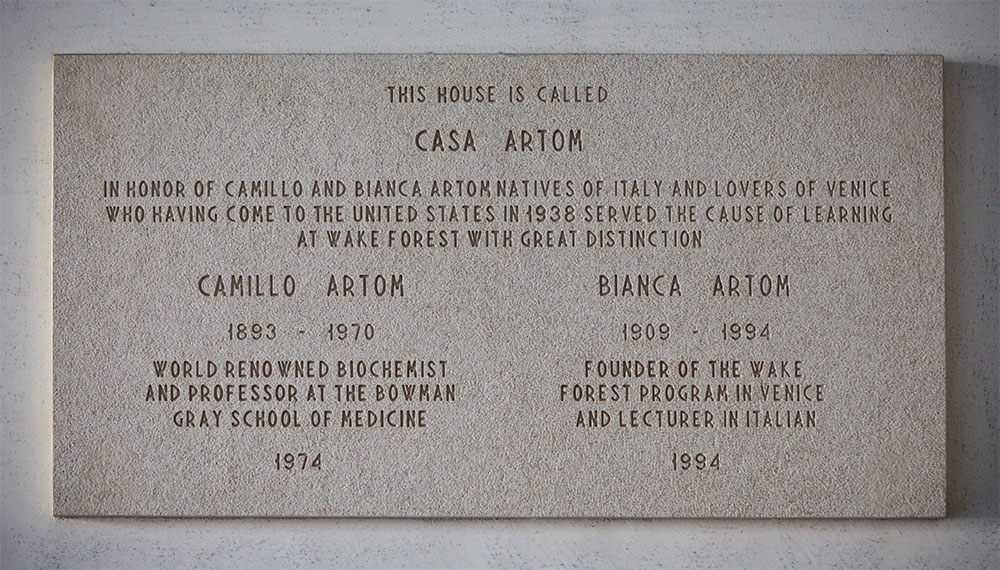
The next morning, they toured “a little palace” on the Grand Canal, owned by the U.S. government and once used as the American consulate. It clearly occupied prime real estate. Except for a brief period in the 1820s, a structure of some sort has stood in that space since at least 1311.
Exploring the empty building, they found a haven that far exceeded their imaginations. With the assistance of Martin, Wake Forest leased the building for three years and then purchased it in 1974. A few months before Scales and Wilson embarked on their trip to Italy, Dr. Camillo Artom passed away. However, Bianca Artom, a native of Venice, was overjoyed that Wake Forest had found a home in the city where she once had lived. In 1979, she created an endowment fund in memory of her husband, making it possible for interested and eager students to study in Italy. In the years since, 253 students have been able to study in Italy because of her generosity. Bianca also assisted in the renovation and operation of Casa Artom for nearly 20 years, and her handwritten recipes still provide flavor within the kitchen on the Grand Canal.
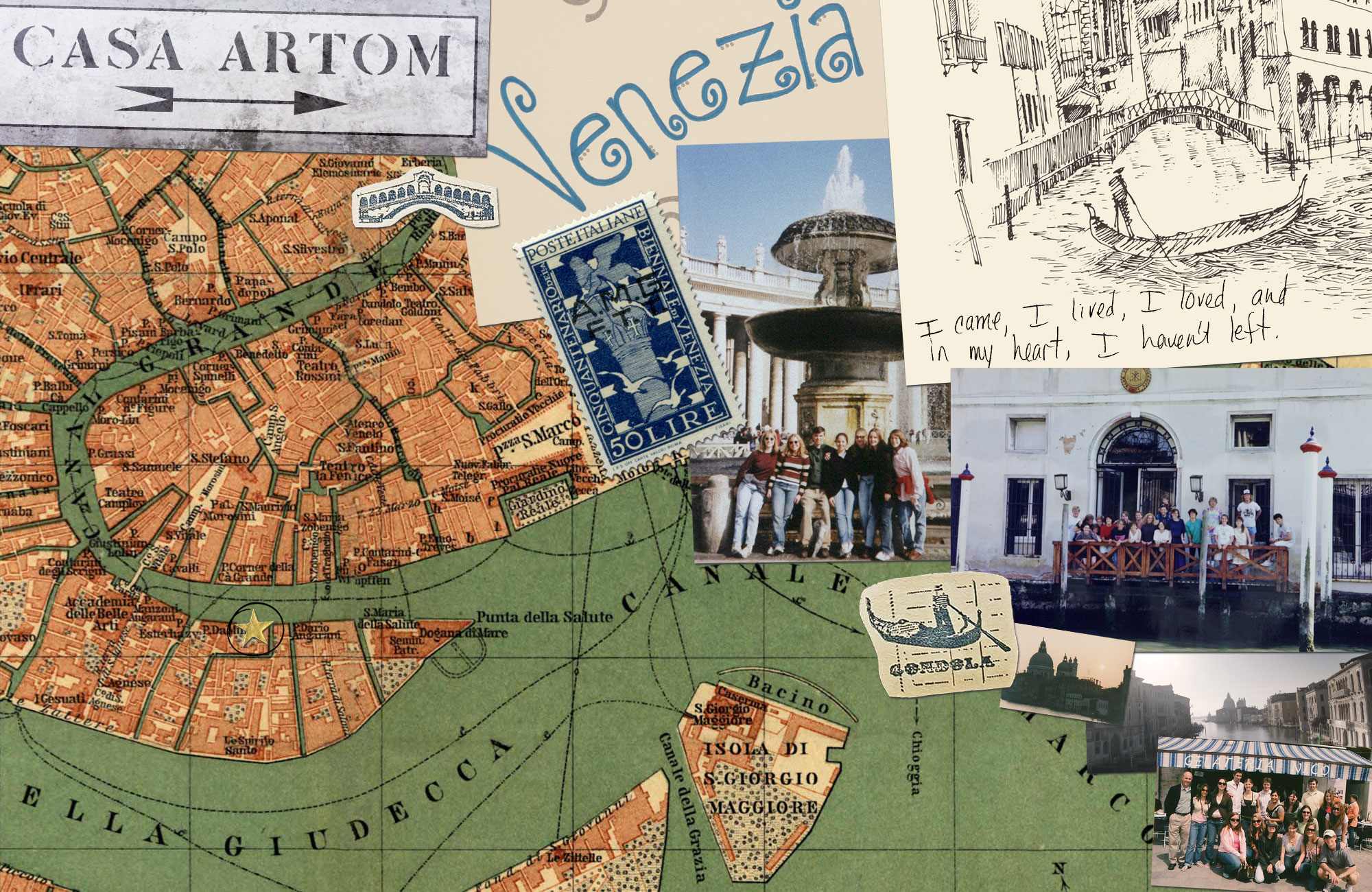
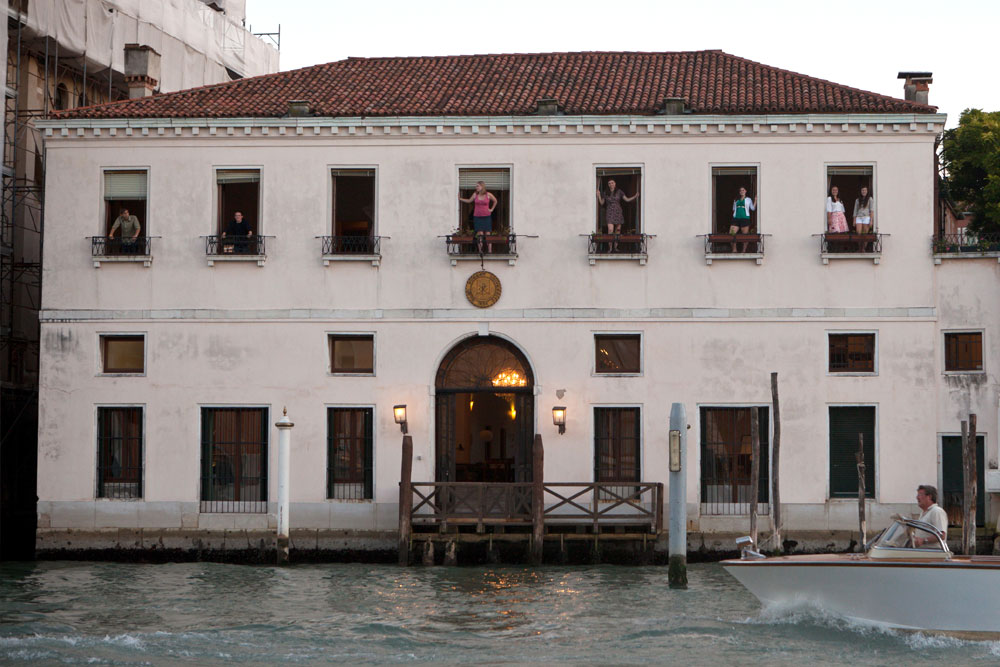
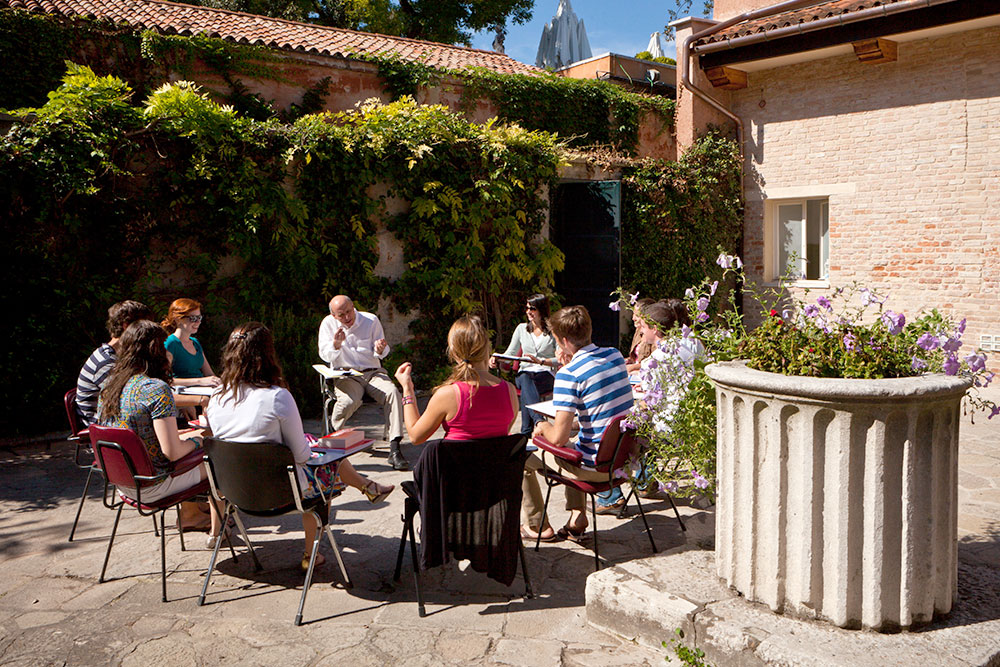
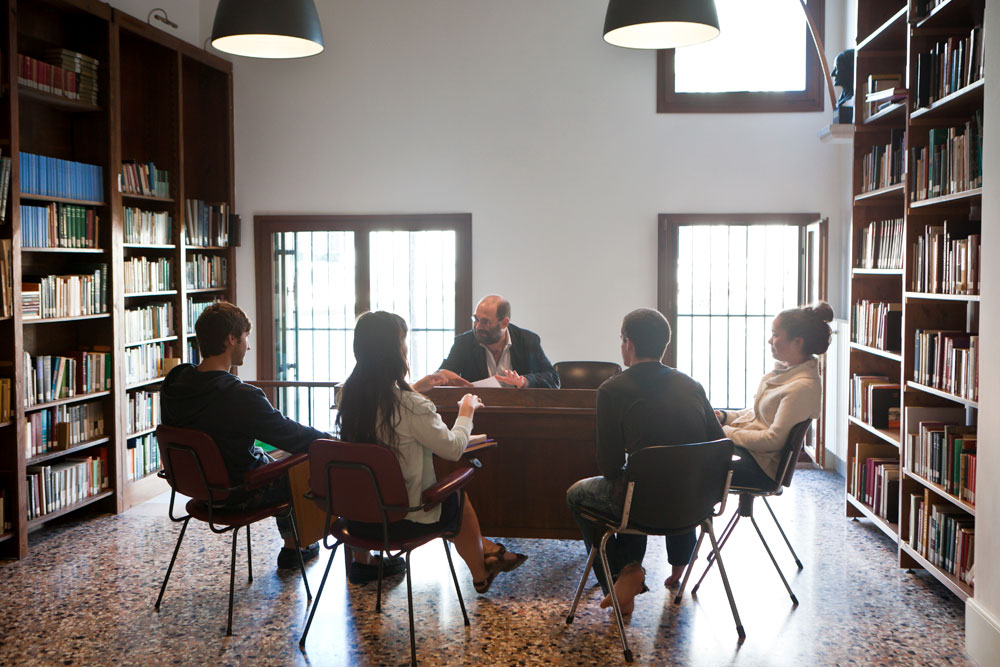
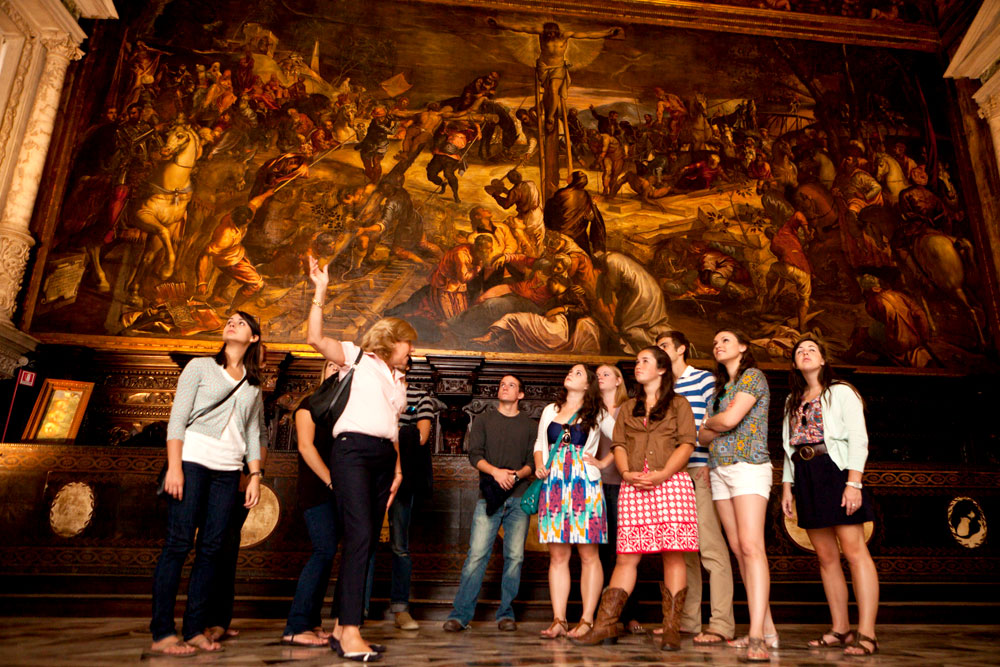

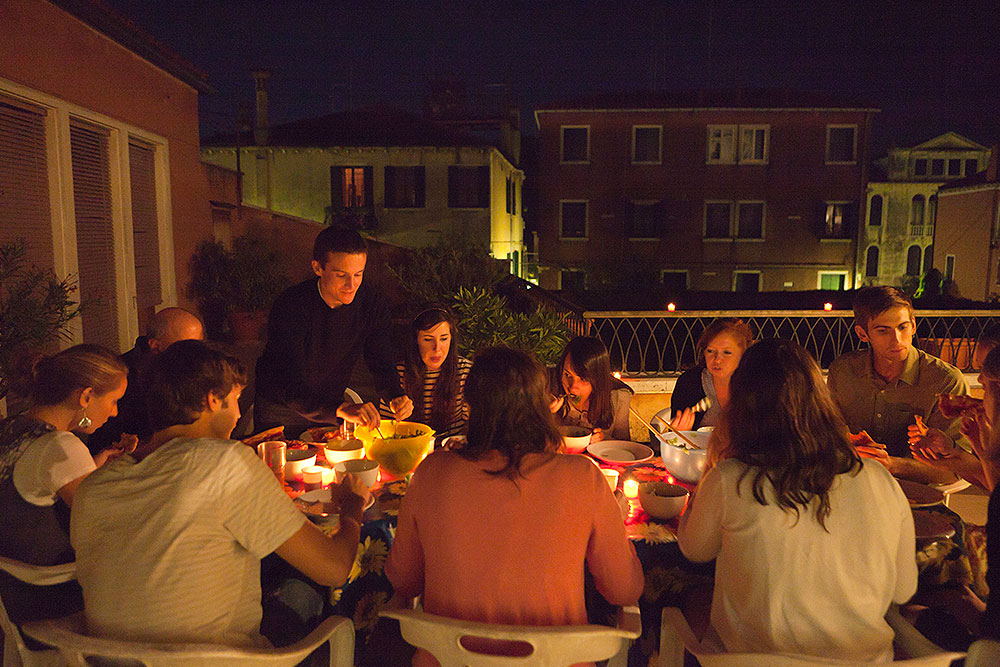
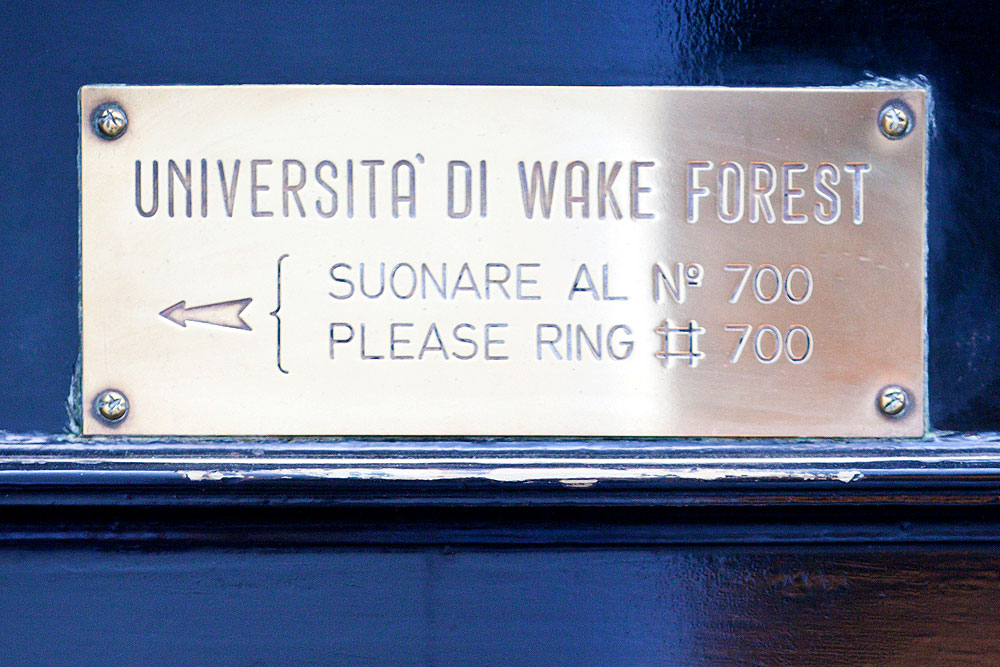
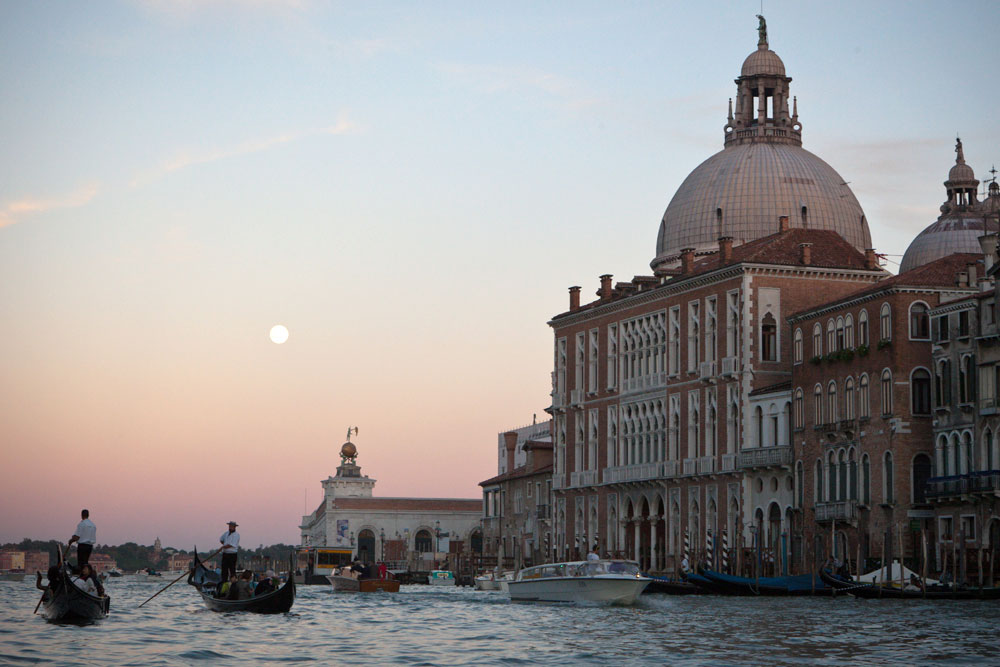
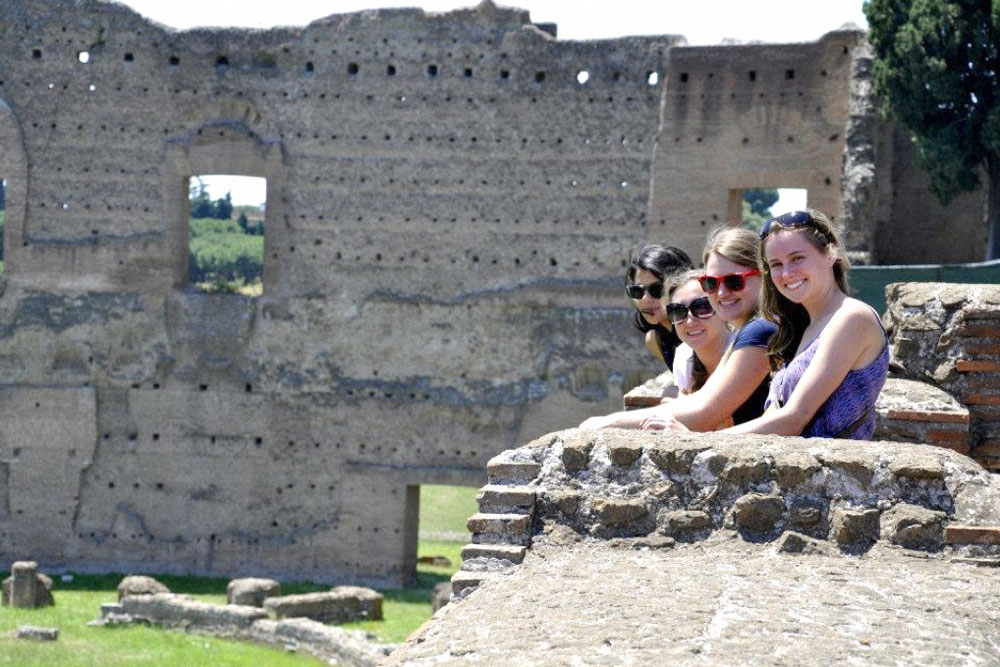

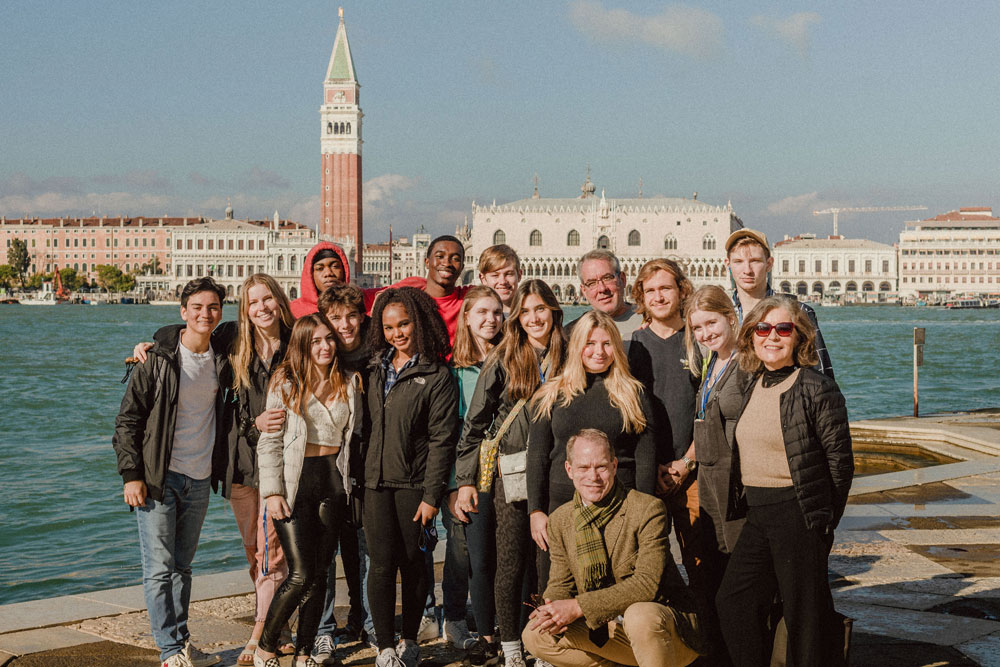
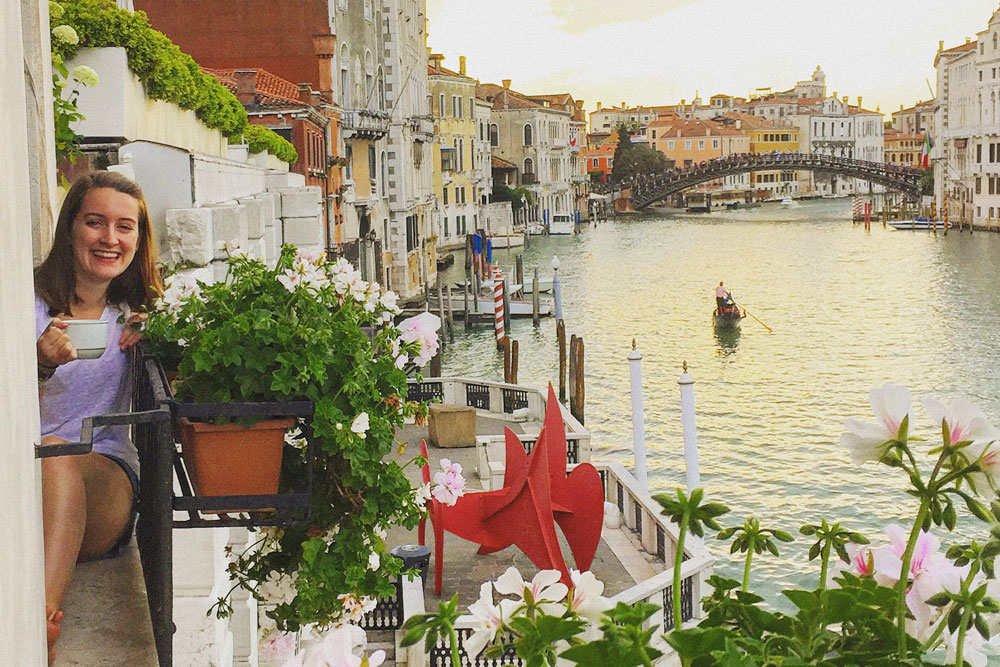
LIFE IN VENICE
There is a never-ending, never stale experience of looking out the windows of Casa Artom – seeing the light come up over the Grand Canal, watching the boats float by, seeing that special Venetian light that seems to flow into the walls of these centuries-old bricks – and realizing that scene hasn’t changed in the last five or six centuries,” reflected Kairoff. “What we’re looking at, the great painters and musicians of the past would easily recognize.”
Wedged between a 15th-century home and the Peggy Guggenheim Art Museum, the Casa Artom program held its first classes in the fall of 1971, with John “Andy” Andronica (P ’89, P ’92), a professor of classical languages and literature, serving as the inaugural resident professor. Nearly every semester since, a Wake Forest professor has led a cohort of about 20 students to the island in the Adriatic Sea to immerse themselves in Italian life and culture. More than 71 faculty members representing 20 academic departments have served as resident professors, including the recognizable names of Barefield, Kairoff, Lubin, Gibson, Franco, Hagy, Kennedy and Broyles.
Students learn from their Wake Forest professor and other local Italian professors, including renowned art historian Terisio Pignatti (DFA ’76), who taught at Casa Artom for more than 30 years. Their classroom education is enhanced by touring local sites; traveling to Rome, Florence, Pompeii and Sicily; and exploring other countries in Europe. And their lives are enriched by the relationships that are forged in and around the walls of Casa Artom.

Those who have spent time in Venice attest that their fellow students quickly become like family and that the professors and their families make Casa Artom feel like home. Andronica explained how the Casa Artom crew would plan communal meals to develop their culinary skills in the kitchen and their language skills while out in the local shops purchasing food. One memorable meal was Thanksgiving of 1992. Even with the challenges of needing some ingredients couriered to Venice by visiting parents and having to split the 27-pound turkey in half to fit in the oven, there were 35 satisfied stomachs that November.
Others tell tales of testing out cafes to find their favorite one, accidentally slipping into the canal and being treated to an entirely new view of Byzantine architecture, and dining out in the rainy season when waiters wore rain boots and tables were weighed down at the corners.
And even though they were far from Wake Forest, the students still celebrated what was happening in Winston-Salem. According to Molly Nevola (’08), a recipient of the Hubert Humphrey Studies Abroad Scholarship, after the football team won the ACC Championship in 2006, the cohort celebrated by rolling a tree in their Venetian courtyard.
These stories and many other greetings are etched in the memories of those who lived them and written on the pages of 14 bound scrapbooks that chronicle the life of Wake Forest’s Casa Artom. Guests at the house sign the book, and at the end of the semester, students write messages, offer advice, attach photos and add drawings to help capture their months in Venice.
“No one told me that Casa Artom could be so wonderful,” wrote Letishia Seabrook Jones (’94), a Presidential Scholar. “This experience has been earth-shattering and self-revealing. Take advantage of the distance and explore. Learn things about yourself you would otherwise never know.”
“Venice has taught me to anticipate more – not just the milestones in life, but the everyday activities that make life what it really is,” wrote Dr. Jeffrey Childers (’97), a Poteat Scholar.
Fifty years ago, Wake Forest had the foresight to create a remarkable experience – a home – for students to live and learn as citizens of another city, country and culture. This model was replicated throughout Europe at the Worrell House in London in 1977 and at the Flow House in Vienna in 1998. When alumni harken back to their Wake Forest experience, their time studying at a Wake Forest international house often stands out. They remember not only the academics, but also the connections to their peers, faculty members and another culture that shaped them and challenged them in ways great and small. So now, 50 years later, the Wake Forest family celebrates where it all began – along the banks of the Grand Canal in beautiful and beloved Venezia.
In addition to supporting Artom Scholars, many have provided contributions to enhance the Casa Artom experience. Several Wake Foresters who studied at Casa Artom in the fall of 1974, including Craig Smith (’75, P ’12) and Leslie Pittman-Smith (’74, P ’12), created a fund to honor their resident faculty member, Philip Perricone (P ’91), retired professor of sociology, and his family.
If you are interested in making a gift to support the student experience at Casa Artom, please contact Mike Haggas, assistant dean of college development, at haggasmp@wfu.edu or 336-758-6186.
Fun Facts
- There are 2,021 Wake Foresters who have studied at Casa Artom.
- There have been 71 faculty members representing 20 academic departments who have served as resident professors at Casa Artom.
- More than 30 Wake Foresters met their spouses while studying together at Casa Artom.
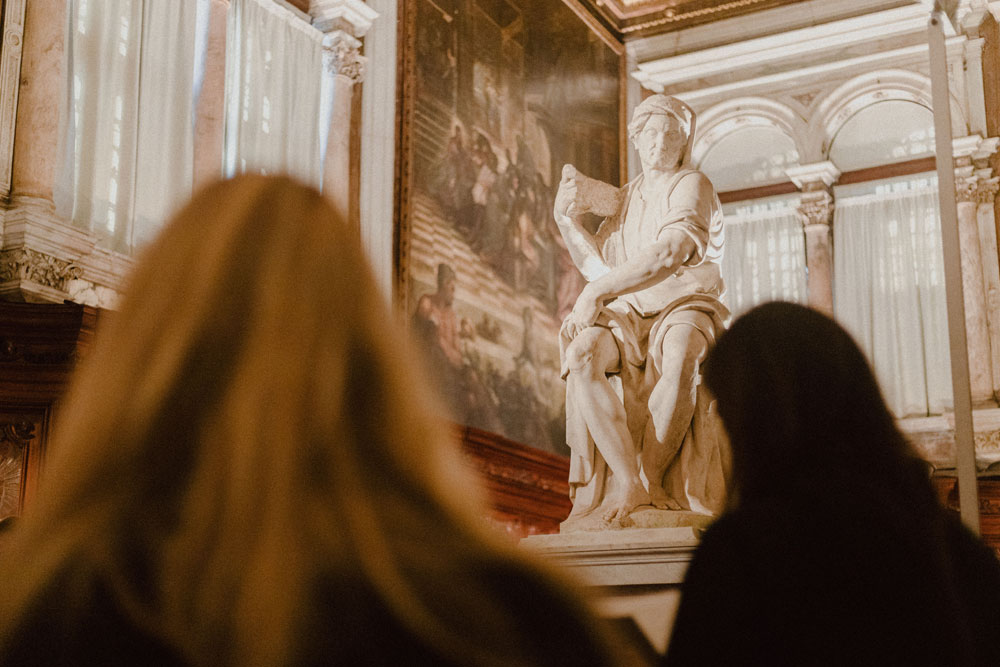

- Fourteen children of Casa Artom alumni followed in their parents’ footsteps and studied in the house on the Grand Canal.
- Thanks to the generosity of Bianca Artom, 253 Artom Scholars have studied in Venice.
- Bianca Artom’s handwritten recipes were compiled into a cookbook, “Bianca’s Italian Table,” after her death in 1994.
- Alumni of Casa Artom reside in 45 U.S. states, Washington, D.C., Guam and 14 countries outside the U.S., including Australia, Brazil, Canada, China, Czech Republic, France, Germany, Indonesia, Italy, New Zealand, Philippines, South Africa, Switzerland and the United Kingdom.
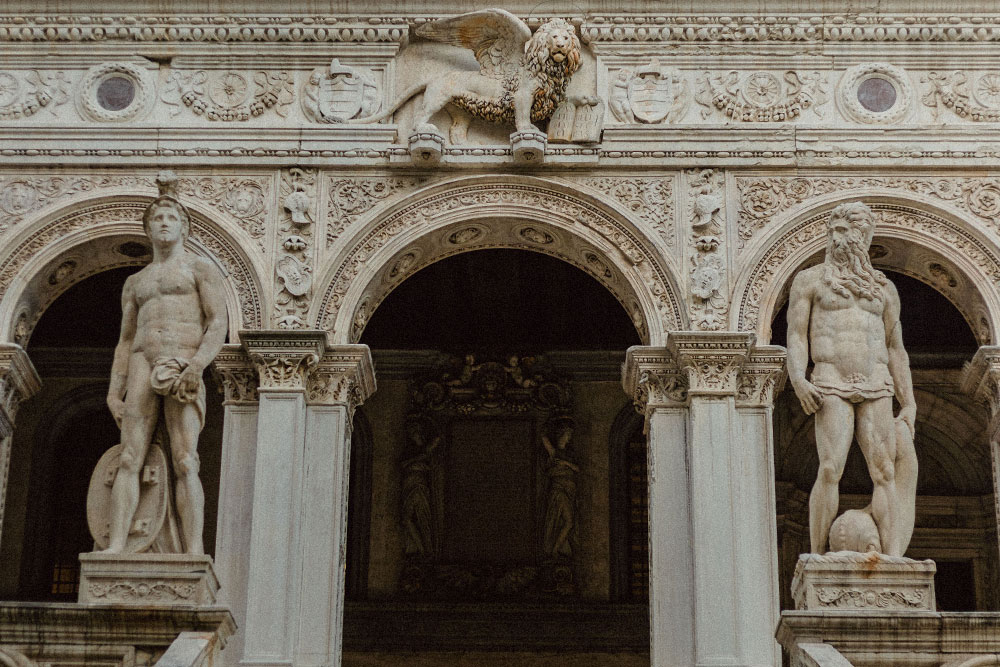
Celebration Gala 2023
On Friday, May 19, 2023, the Celebration Gala was held with fellow alumni of the Casa Artom program, faculty, and University administrators in attendance.
They gathered and celebrated with a delicious meal, live music, and beautiful Italian wines! The dazzling cocktail event was held at the at the Palazzo Pisani Moretta.
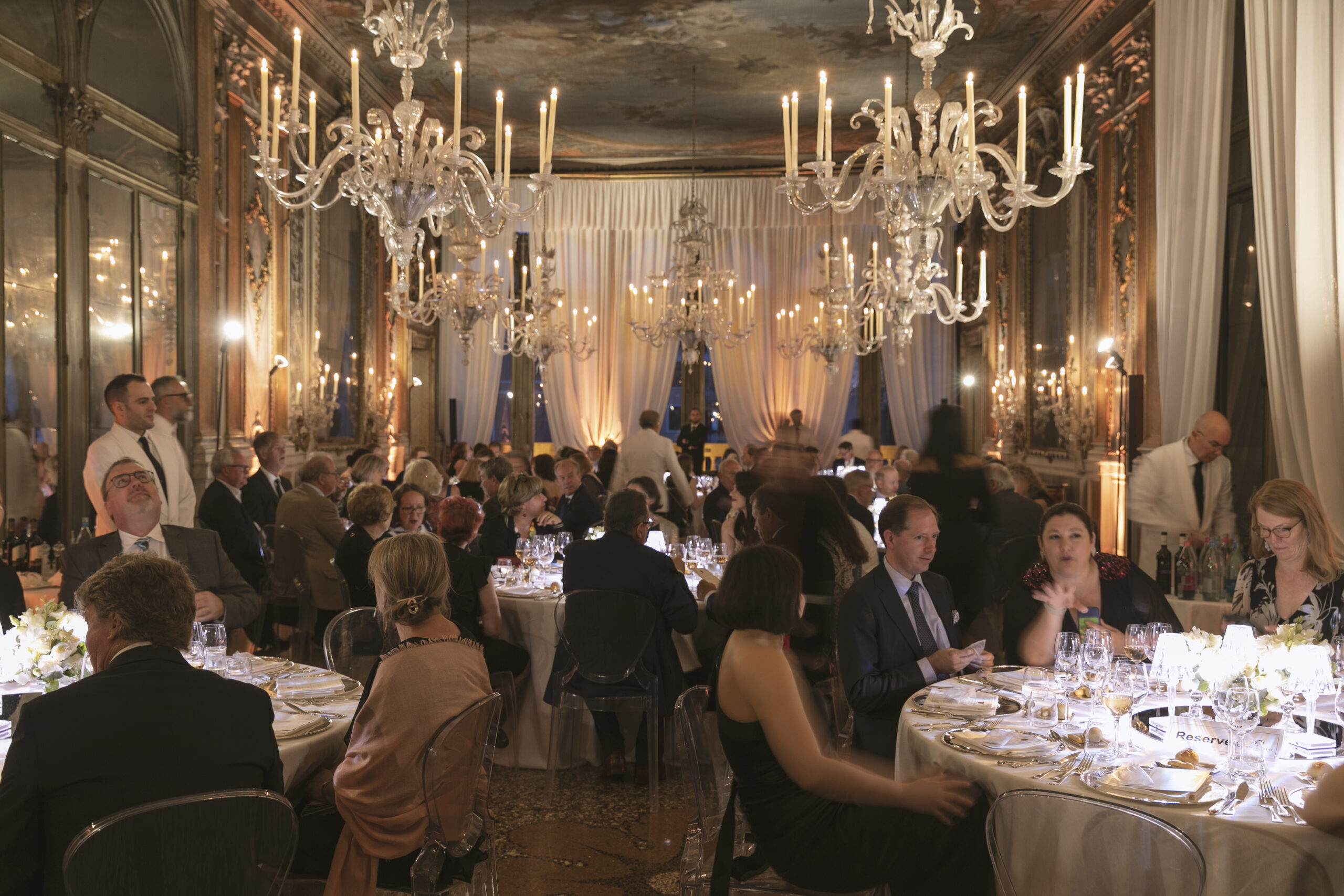
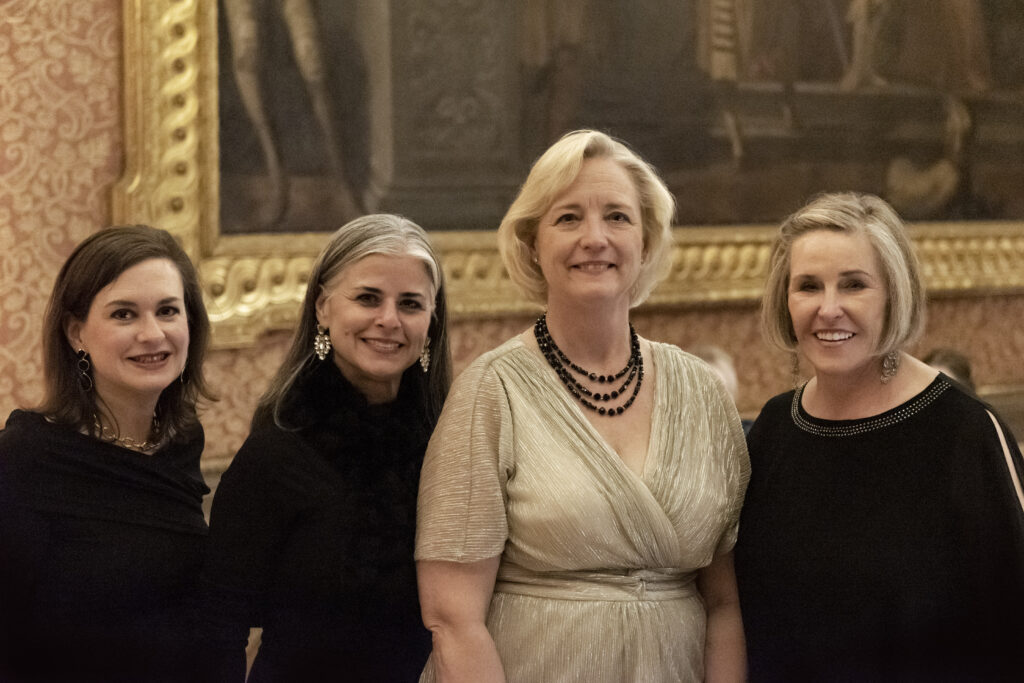

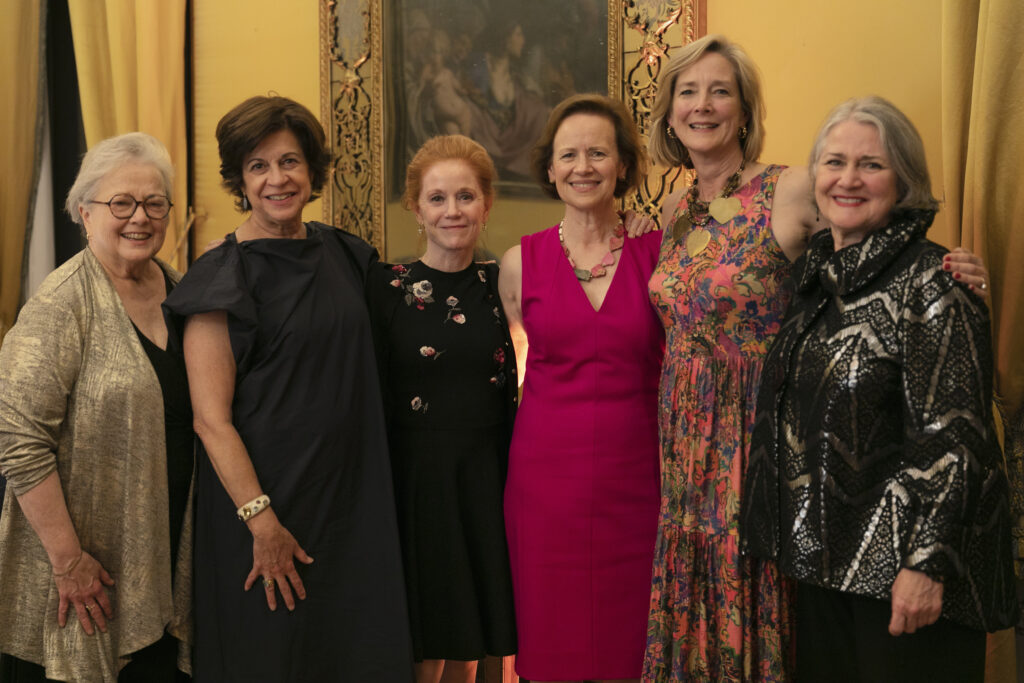

The Redemption of Private Brown:
Two converging paths united in a singular mission for justice
Eleanor Morales (JD ’10) and students in the law school’s Veterans Legal Clinic, supported in part by philanthropy, helped Private James Brown receive an honorable discharge and the Purple Heart. Putting Pro Humanitate into action brought justice to a soldier who had waited for 70 years.
